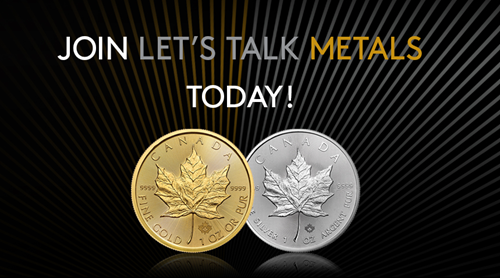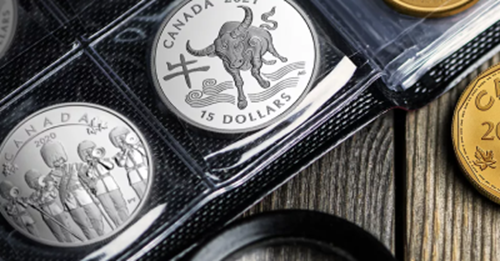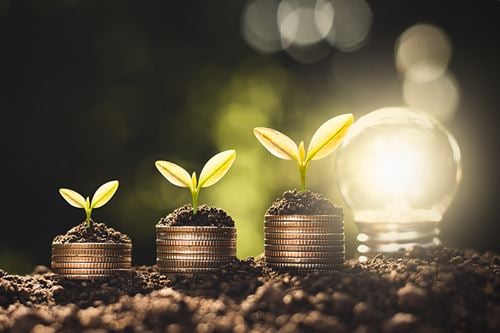What Role Does Silver Play in the Green Economy?
- Jun 24, 2024
- loveSILVER
- 3 minute read
The information contained in this article is current as of the date of publishing.
Silver has had many industrial applications throughout history, from food preservation and medical treatments to photography, electronics and even space exploration. But in recent years, organizations like the Silver Institute have seen a surge in global demand for silver, exceeding the available supply.[1] According to their World Silver Survey 2024, a key factor driving this trend is silver’s role in the “green economy,” in which it can be used to power electric vehicles, solar panels and other technologies—helping pave the way toward a more sustainable future.[2]
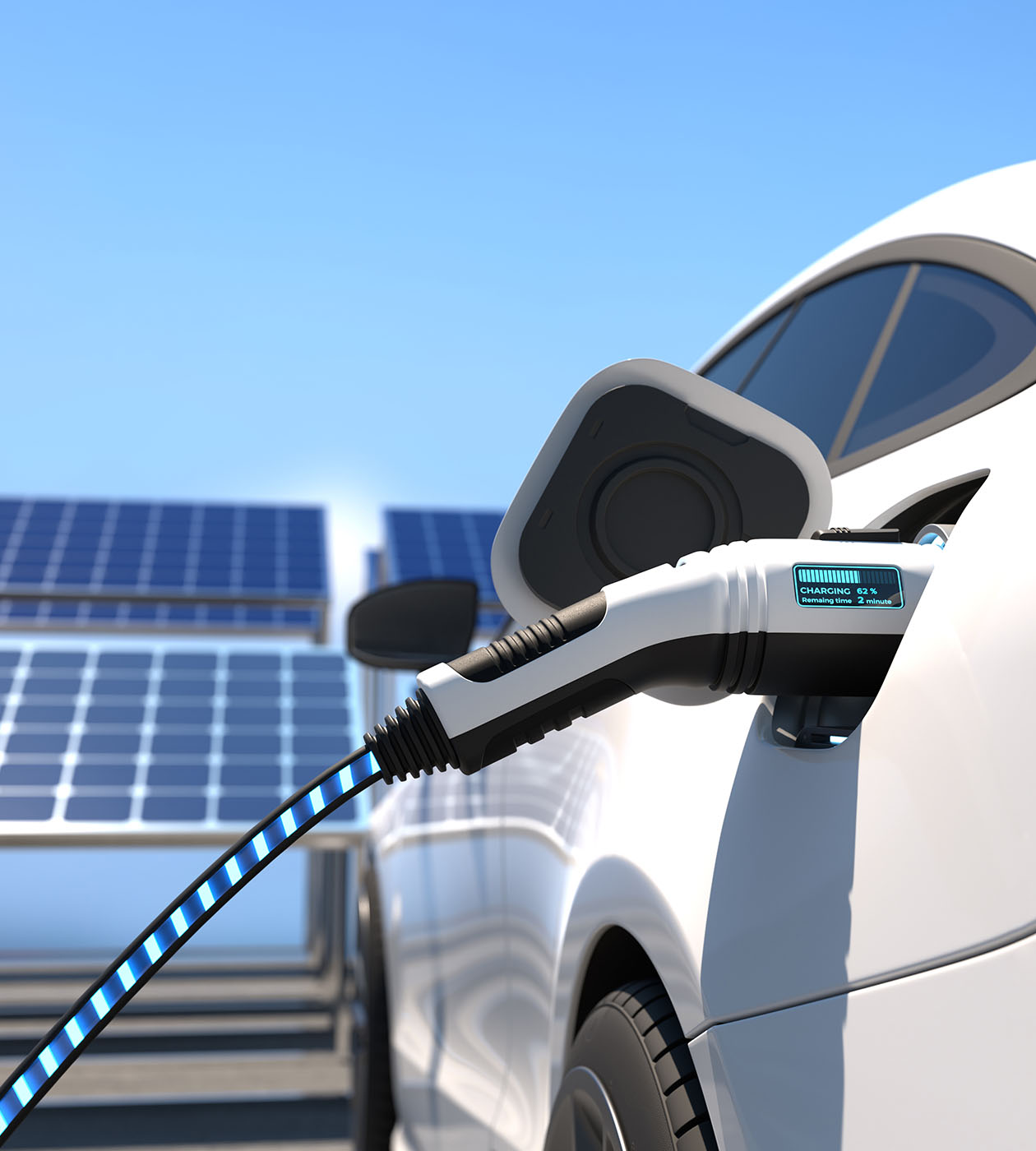

The information contained in this article is current as of the date of publishing.
Silver has had many industrial applications throughout history, from food preservation and medical treatments to photography, electronics and even space exploration. But in recent years, organizations like the Silver Institute have seen a surge in global demand for silver, exceeding the available supply.[1] According to their World Silver Survey 2024, a key factor driving this trend is silver’s role in the “green economy,” in which it can be used to power electric vehicles, solar panels and other technologies—helping pave the way toward a more sustainable future.[2]
WHAT IS THE GREEN ECONOMY?
The United Nations Environment Programme (UNEP) defines the green economy as a sustainable development model that aims to improve human well-being and social equity while significantly reducing environmental risks and ecological scarcities.[3] According to UNEP, in the green economy, growth in employment and income is driven by activities and investments that reduce emissions and waste, improve energy and resource efficiency, preserve biodiversity, and facilitate the transition away from a reliance on fossil fuels.[4]
SILVER’S CONTRIBUTION TO SUSTAINABILITY
Through its unique combination of beauty, industrial utility and antibacterial properties, silver has been one of the most coveted and sought-after elements for millennia. It is already found in almost every computer, mobile phone, car and appliance. According to the experts at the Silver Institute, silver’s importance may grow even further as it finds new applications that will advance the green economy.[5] These applications include:
- Solar panels: Silver plays a vital role in photovoltaic cells, the building blocks of solar panels, where its exceptional conductivity facilitates the transmission of electricity either for immediate use or storage in batteries. Silver paste or ink is commonly applied to the surface of photovoltaic cells to create a reflective coating that maximizes the absorption of sunlight and increases their efficiency. Plus, the metal’s superior resistance to corrosion and oxidation makes it an ideal material for outdoor environments.
- Electric vehicles: Silver’s unique physical and chemical properties make it an ideal component in green energy applications in the automotive sector, including the production of electric vehicle (EV) batteries. Silver helps increase battery efficiency and performance, allowing them to store more energy and extend the distance an EV can travel on a single charge.
- Hydrogen fuel: Silver serves as a catalyst in the production of hydrogen fuel cells, facilitating the electromechanical reaction between hydrogen and oxygen to produce clean electricity—with water being the only by-product.[6] This process, known as electrocatalysis, enables the efficient and sustainable conversion of hydrogen into electrical energy. Engineering experts have suggested that this may help bring down production costs, enhancing the viability of fuel cells not only in heavy-duty transportation but also in clean energy storage.[7]
- 5G networks: Silver's exceptional conductivity and reliability make it pivotal in the development of 5G networks. In turn, the high-speed, low-latency connectivity of 5G enables advanced technologies like Internet of Things (IoT) sensors, which can be used to monitor emissions, water leakage, fuel and energy consumption, and more, all in real time. Studies have shown that IoT sensors and other “Industry 4.0” digital technologies can provide the insights and automations needed to reduce energy consumption and carbon footprint, improve air quality, and decrease waste across many industrial sectors.[8]
- Water purification: Silver's antimicrobial properties can be used in water purification systems to prevent waterborne illnesses caused by bacteria and algae buildup in pipes and water tanks. Researchers from the University of Arizona are currently exploring silver as a filtration option that will reduce the need for chemical disinfectants and provide cleaner drinking water with less environmental impact.[9] In developing countries like Haiti, ceramic water filters incorporating nanosilver are providing an efficient, affordable way for communities to access clean water.[10]
THE MINT’S ROLE IN THE GREEN ECONOMY
The Mint is deeply committed to implementing and investing in sustainable technologies and processes that reduce our carbon footprint, minimize water usage and waste, and lessen the overall environmental impact of our operations. That’s why we support Canada’s adoption of the United Nations 2030 agenda for sustainable development, and have put in place an ESG Commitment and Action Plan to reach our corporate objectives in this area, including our ambitious goal of achieving a carbon-neutral circulation business by 2030.
© 2024 Royal Canadian Mint. All rights reserved.
Disclaimers:
The links to websites and references to documents provided are available in English only and are owned or operated by third parties. By accessing a third-party website and/or document you understand that they are independent from the Royal Canadian Mint (the “Mint”) and that the Mint has no control over the content of such third-party websites and cannot assume any responsibility for materials created or published by such third-party websites. In addition, a link to a third-party’s website or document does not imply that the Mint endorses the website, the data, information and/or the content of such website. It is your responsibility to ensure that you review and agree to terms and conditions applicable to such websites before using it. Please note that the Mint is not responsible for webcasting or any other form of transmission received from any linked website.
Mint does not guarantee the accuracy or completeness of any information contained herein, nor does the Mint accept responsibility for any losses or damages arising directly or indirectly from the use of or reliance on this information.
Reproduction or redistribution of any of this information is expressly prohibited without the prior written consent of the Mint.
Nothing contained herein constitutes a solicitation, recommendation or offer for the purchase or sale of products or services of any kind whatsoever. Diversification does not guarantee any investment returns and does not eliminate the risk of loss.
The information provided herein is intended for informational purposes only and is not intended to constitute investment, financial, legal, tax or accounting advice, and you should not rely on the information herein for such advice. Past performance, and historical trends are not indicative of future results. Many factors unknown to the Mint may affect the applicability of any statement or comment made herein to your particular circumstances, and this information does not take into account any investment objectives, financial situation or particular needs of any particular person. You should directly consult your financial professional or other advisors before acting on any information herein. The information and materials herein are provided with the understanding that the Mint is not acting in a fiduciary capacity.
The information provided herein may contain forward-looking statements which are based on current expectations and are subject to change. Forward-looking statements involve significant known and unknown risks, uncertainties and assumptions. A number of factors could cause actual results, performance or achievements to be materially different from any future results, performance or achievements that may be expressed or implied by such forward-looking statements. These statements are not guarantees of future performance and should not be relied upon as such. The Mint assume no responsibility for updating any information, including forward-looking statements, contained herein.
Any person accessing this information should also consult the Mint’s website Terms of Use | The Royal Canadian Mint.
[1] The Silver Institute, World Silver Survey 2024, p. 8.
[2] The Silver Institute, World Silver Survey 2024, p. 10.
[3] United Nations Environment Programme, Green economy.
[4] United Nations Environment Programme, Green economy.
[5] The Silver Institute, Silver for a sustainable future.
[6] The Silver Institute, Backgrounder: Silver catalysts.
[7] Interesting Engineering, Silver catalysts spark a revolution in affordable fuel cells.
[10] The Silver Institute, Silver for a sustainable future; Water Charity, Filter making and distribution social enterprise.
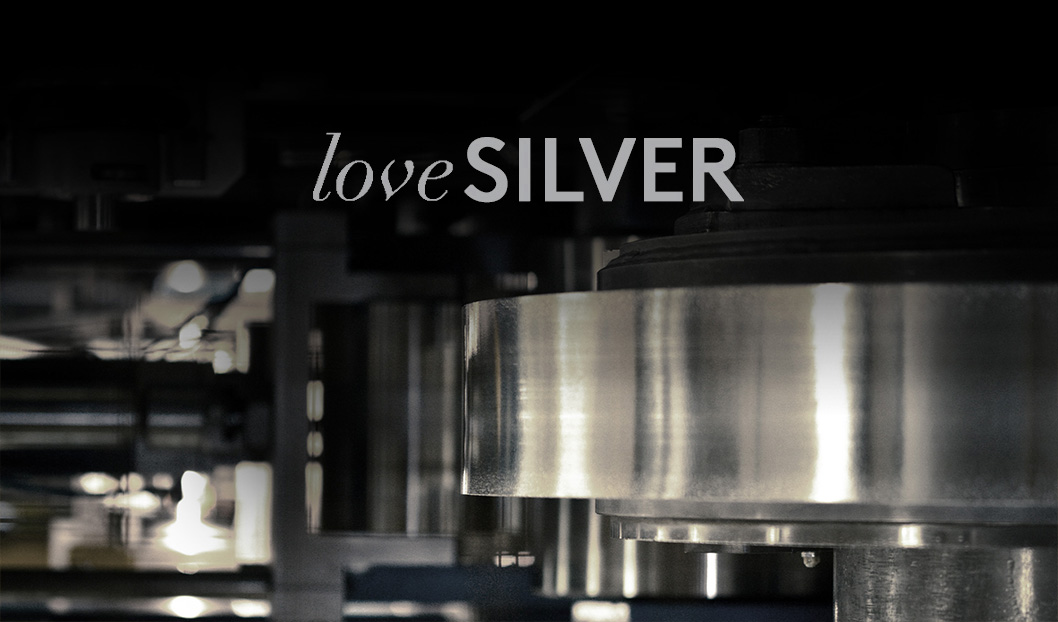

loveSILVER™
loveSILVER™
Silver is one of the scarcest, most essential and most valuable metals in the world. The industrial usages for silver are rich, driving its demand and appeal as an investment. Silver is precious and here’s why.

